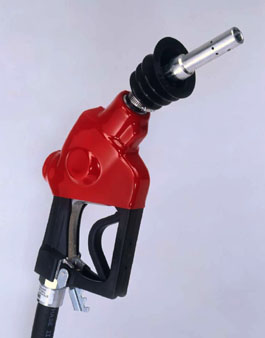The Problem
EPA regulations to eliminate gasoline vapors from escaping into the atmosphere during vehicle refueling have caused problems for systems monitoring vapor return from hoses at gasoline stations. Although many gasoline stations are required to install systems to extract vapor from vehicle gasoline tanks, the EPA has mandated onboard refueling vapor recovery (ORVR) in all cars produced after 1999. ORVR is installed in the vehicle�s fuel system and it extracts vapors from the vehicle�s tank. As a result, it is difficult to determine the status of the pump�s vapor return system. The system could register very little to no vapor because of blockage or because of the refueling of an ORVR vehicle. Using data collected from one station over a weekend of activity, can you tell which hoses are functioning properly and which are blocked because of a fault?
Background Information
“Veeder-Root is the world’s leading supplier of automatic tank gauging and fuel management systems and one of the few companies in the industry to design, manufacture and service its own products. Veeder-Root presently has tank monitoring systems in more than 500,000 underground storage tanks around the globe.” (http://www.veeder.com/page/AutomaticTankGauges) One of the product that Veeder-Root produces is the Enhanced Vapor Recovery (EVR) system found at gas station pumps. If ten gallons of gasoline are dispensed into a tank, an equivalent amount of vapor should be recovered by the EVR.
In 1994, the Environmental Protection Agency issued regulations mandating onboard conrols on vehicles. Beginning in 2000, all new vehicles are designed with an onboard refueling vapor recover (ORVR) system. In the vehicle’s fueling system, vapors travel to a carbon-packed canister where they are absorbed. The engine draws vapor into the intake manifold where it is used as fuel. Instead of vapor collecting in the tank and then being forced out when the vehicle is refueld, the vehicle itself absorbs the vapor and recirculates them back into the engine.
Efficient EVR systems should capture the escaping gasoline vapors from non-ORVR vehicles. Statistical tests can be designed to determine when EVR systems installed on a particular hose has failed. These tests are hampered by the presence of increasing numbers of ORVR vehicles. Hoses registering no vapor returned may be working properly but have been used by ORVR vehicles. Any new statistical tests must be able to differentiate between true failures of the EVR system and the presence of ORVR vehicles, the latter of which does not signify poor performance of the EVR system.
Materials Included
- Weekly data collected from a California Air Resource Board regulator from a station known to be working as a baseline
- Data collected from a station over a weekend as the unknown
- Suggested approaches and solutions
- Complete explanations for linear regression, correlation coefficients, and the Chi-Square statistical test


